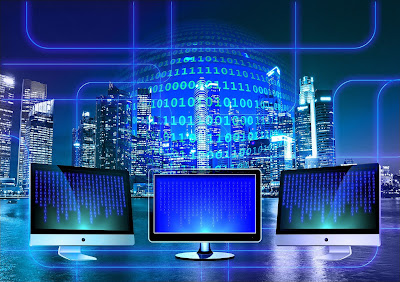What is the Generation of Computer?
Generation of computers: In computer discussion, 'generation' refers to technological steps. That is, if the generation of computer is analyzed then the stages of development of a device called computer will be known.
 |
| Source: Pixabay |
First generation
(1942-1955)
Computers developed between 1942 and 1955 are called first generation computers. The main component of the structural framework of all those computers was the vacuum tube. Although these computers had many advantages as symbols of technological progress, they also had some disadvantages in practice. Earlier all these computers were big in size. Second, they didn't always work reliably. Third, they could not be used without air conditioning. Fourth, the hardware systems of these computers often fail. As such, vacuum tubes were often damaged or destroyed. Then there was no way but to replace it. Fifth, they were not fit to be carried from place to place.
Second generation
(1955-1964)
Second generation computers inherently use more advanced technology. With advanced technology, transistors were replaced by vacuum tubes in computers of this level. The components of these computers were relatively small in size. Now let's see what were the advantages of second generation computers. Earlier they were small in size. Second, they could operate more accurately than first generation computers. Third, they generate less heat when turned on. Fourth, these computers can speed up data processing. Fifth, their hardware systems are also less prone to malfunction. However, the second generation computers also had a number of shortcomings. First, they require air conditioning for use. Secondly, their maintenance requires frequent steps at short intervals. Third, their commercial production methods were quite complex and expensive.
Third generation
(1964-1975)
Through continuous research on the path of development, the third generation computer has applied more advanced technology. Transistors were used in second generation computers. In the third generation of computers, it was replaced by an integrated circuit (IC), a very small electrical circuit usually built on a single piece of silicon. The technology this IC uses is called Large Scale Integration (LSI) technology. Due to the use of more advanced technology than second generation computers, the disadvantages of third generation computers are very less, the advantages are greatly increased. The first, third generation computers were smaller in size. Second, they can operate with greater reliability. Third, they generated less heat during use. Fourth, they can speed up data processing. Fifth, they had low maintenance costs. Sixth, these computers were portable, which meant that they could be easily moved from one place to another. Seventh, they require less electricity to run. Eighth, their commercial production was relatively easy and the cost was low.
Fourth generation
(1975 to the present)
The third generation LSI technology was replaced by the very large scale integration technology, or VSLI technology, used in the fourth generation computers. Based on this technology, the computer is equipped with a microprocessor. Naturally, its practical benefits multiplied. Firstly, the manufacturing cost of this computer was greatly reduced. Secondly, they are very fast in terms of playing the role of a data format. Third, their memory capacity is very strong i.e. these computers can hold large amount of data in their memory at once. Fourth, they are quite small in size. Fifth, they require less electricity to run. Sixth, out of the four generations discussed so far, this generation of computer is the cheapest in terms of price.
Fifth generation
Scientists are now busy developing fifth generation computers, researching the development of more advanced and sophisticated technologies. The application of optic fiber technology has already started. It must be remembered that human intelligence has its own personality, but not that of a computer. Computers have to be made intelligent. So computer intelligence is artificial intelligence. Fifth generation computers are testing how this intelligence and its use can be made faster and more efficient with the help of optical fiber and other technologies.
Classification of Modern Computers: Computers can be divided into three categories based on the method of data processing.
Digital computers can be further divided into five categories on the basis of their size and capabilities -
(1) super computer
(2) main frame,
(3) mini computer,
(4) Microcomputer,
(5) Personal Computer (PC).
Nowadays only digital computers are used everywhere. Therefore, in the next step of this section, the front or relation of digital computer is discussed.


.png)

